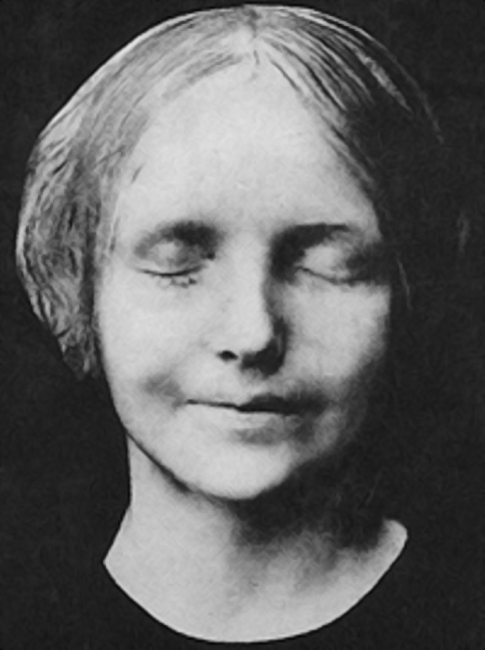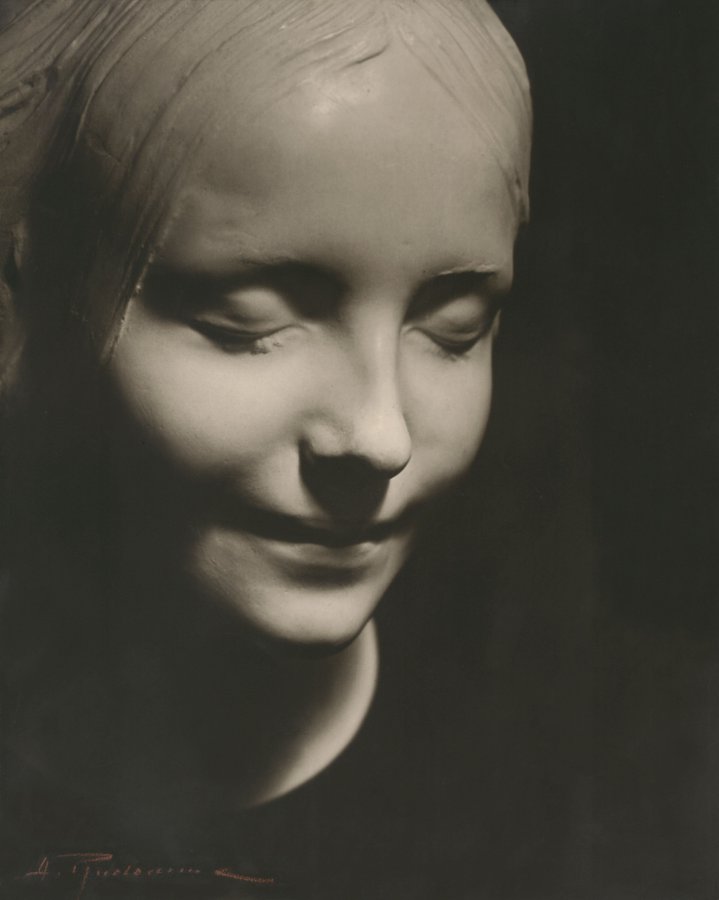- Grange J. Resusci Anne and L'Inconnue: The Mona Lisa of the Seine. BBC News. 16 october 2013.
The unknown woman of the Seine
In a Parisian atelier, craftspeople create busts and statues since 1870. How is this linked with Resusci Anne, the world's most famous CPR learning dummy?
L'Inconnue de la Seine
No one knows her name. We know nothing of her age, her story, why she ended up in Paris, or what led to her drowning. However, when her lifeless body was pulled from the murky waters of the river Seine at the end of the 19th century, the girl known forever as L'Inconnue de la Seine (the unknown woman of the Seine) began an incredible new chapter after her death.
This strange second chapter, a surreal postscript that no one could have predicted, has ultimately helped save millions of lives, long after her life was tragically cut short.
What really happened to L'Inconnue before and after her drowning is the subject of some debate, shrouded in a Parisian legend that is over 150 years old by now.
L'Inconnue was about 16 years old when she died, which may been by suicide. No one knows this for a fact. However, there were no marks on her body and many concluded that she took her own life. After being pulled from the Seine, she was transported to the Paris morgue and displayed to the public next to the bodies of other unknown dead for identification purposes. At the time, this macabre parade of anonymous corpses was a popular public distraction. 'No other single window in Paris attracts more spectators than this one,' reads an account of the time.
Despite the crowds, however, no one recognised L'Inconnue or, at least, no one came forward with clues. But, even though she may never have been identified by the crowds at the morgue, this does not mean that she went unnoticed. Even if death, her serene appearance made heads turn. One of those spectators was a morgue attendant, who was so impressed by her features that he ordered a plaster cast of her face.
The stranger of the Seine (public domain image)
The Drowned Mona Lisa
The mask was a success. Rather quickly, the charming and deadly mask resembling L'Inconnue was reproduced in specimens sold in souvenir shops in Paris, then in Germany and the rest of Europe. Soon the young woman's face became a muse for artists, novelists and poets, all eager to weave imaginary identities and stories around the mysterious woman. The fascinating mask of this unknown dead girl - described by the philosopher and writer Albert Camus as the 'drowned Mona Lisa' - became a coveted cultural icon.
One of the earliest stories featuring it is the 1899 novella 'The Worshipper of the Image' by Richard le Gallienne, which portrays the mask as a malignant force that bewitches and ultimately destroys a young poet:
[...] The face smiled, emanating a sense of great inner peace, but at the same time a shadow of deception. Another characteristic of hers: it seemed as if the woman could open her eyes at any moment. If you looked away from her and then back, she seemed to smile to herself while opening her eyes without your knowledge, and closing them just in time. [...]
Other authors have instead told the story of an innocent young rural woman who arrives in Paris, is seduced by a rich lover, and is then abandoned when she becomes pregnant. And, with no one to turn to, she decides to drown in the waters of the Seine.
The Unknown Virgin, Ourcq Canal - Albert Rudomine 1927
Kissed by doctors, nurses and many others
Half a century after her outburst of fame, L'Inconnue turned into a different type of icon, with the help of a man born decades after her death.
His name was Asmund Laerdal, a successful Norwegian toy manufacturer. In 1958, he was contacted by Dr Peter Safar, who had recently invented an innovative rescue technique for victims of cardiac arrest by combining mouth-to-mouth respiration with chest compressions. Upon a request from Dr. Safar, Lærdal made the first life-size dummy for teaching resuscitation techniques. Lærdal wanted his dummy to look natural. In addition, he felt that a female doll would look less threatening to trainees. Remembering a mask hanging on the wall of his grandparents' house seen many years earlier, he decided that L'Inconnue de la Seine would become the face of Resusci Anne.
Today, considering the more than 400 million people who have taken a course in CPR, we can say that the face of L'Inconnue de la Seine is certainly the most kissed in the world.
Resusci Anne Laerdal (photo credits: Laerdal)


